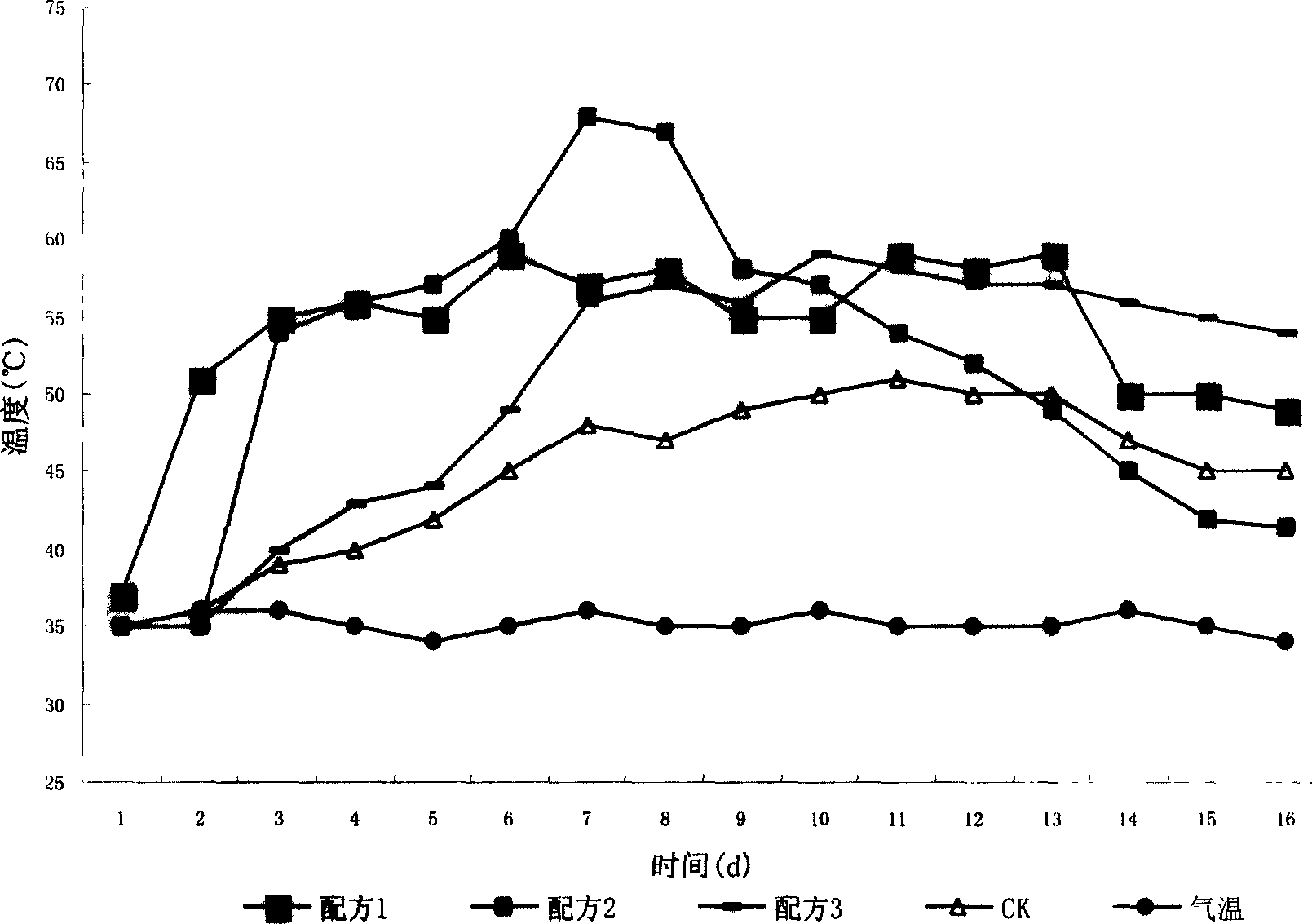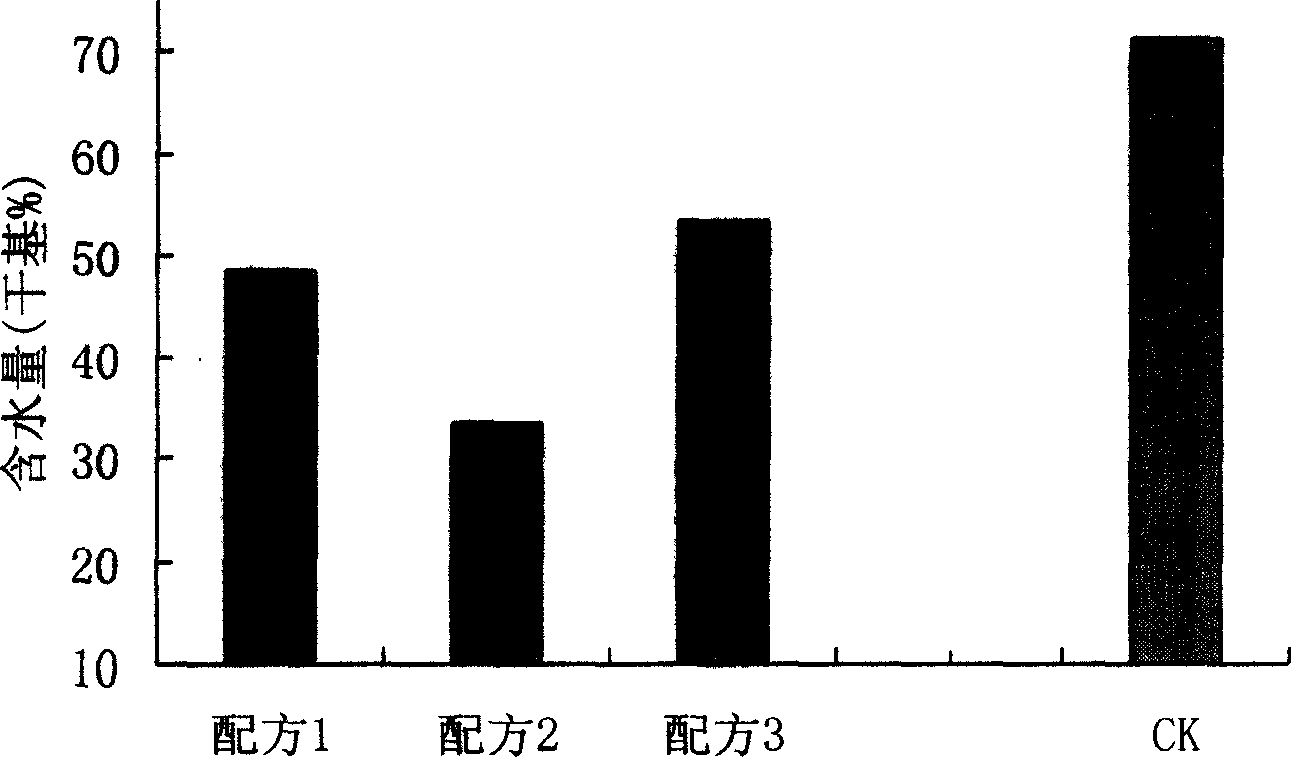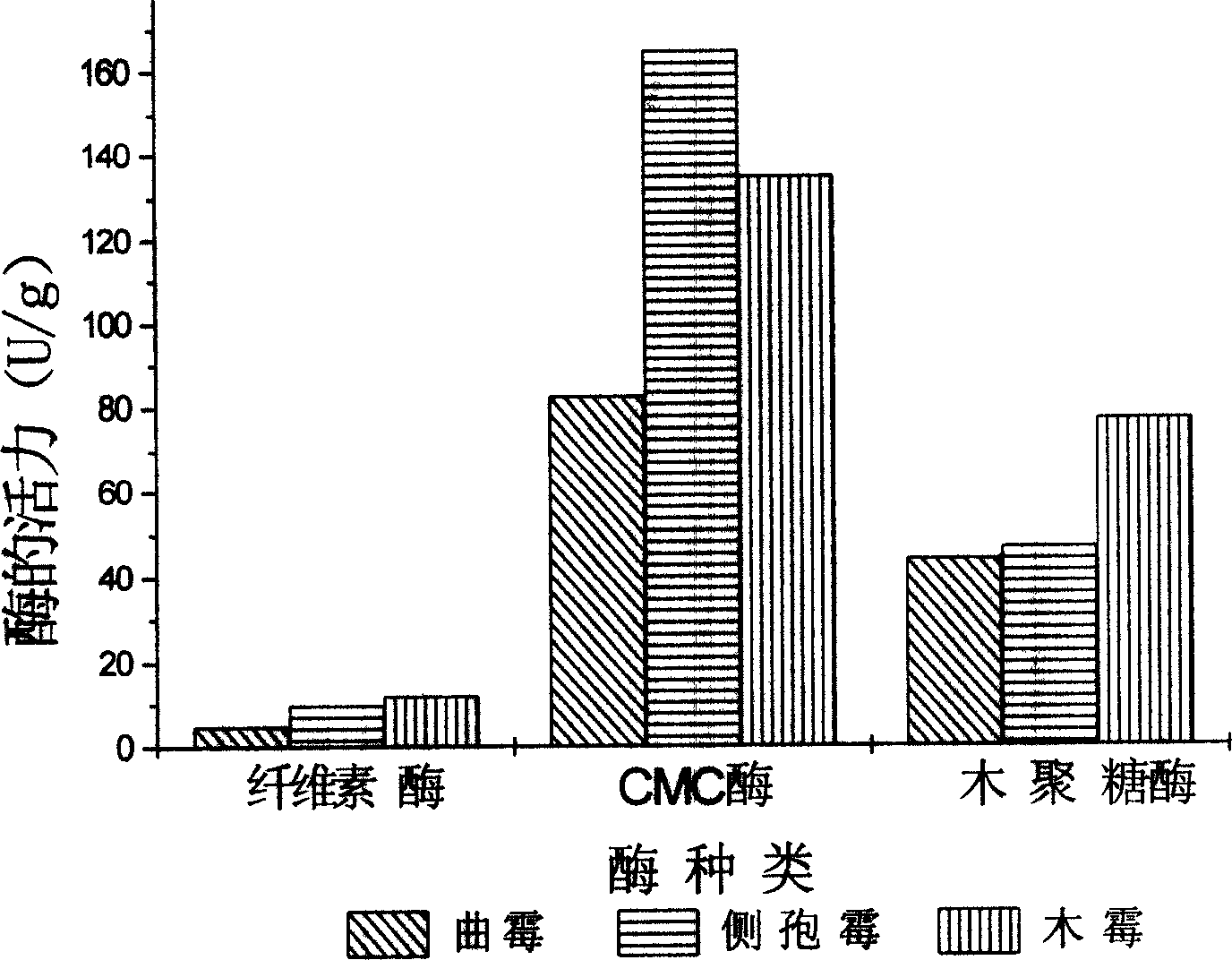Microbial fermenting agent
A microbial starter, starter technology, applied in microorganisms, microorganisms, biochemical equipment and methods, etc., can solve problems such as low efficiency, and achieve the effect of improving degradation efficiency and promoting crop growth
- Summary
- Abstract
- Description
- Claims
- Application Information
AI Technical Summary
Problems solved by technology
Method used
Image
Examples
Embodiment 1
[0038] Raw material: Cow dung from a dairy factory. Medium: solid medium used for mold fermentation in starter: 70g straw, 30g bran, 2g ammonium sulfate, 0.26g sodium dihydrogen phosphate, 0.51g magnesium sulfate, 200ml water, natural pH. Slant activation medium: PDA medium, broth medium; medium for liquid expansion: PDA medium (to cultivate yeast), broth medium (to cultivate bacteria), Gaoshi medium (to cultivate actinomycetes).
[0039] Preparation of starter: insert the slant strains into the corresponding culture medium, carry out liquid or solid culture under different conditions, and make finished starter products with different formulas in proportion after the cultivation is completed.
[0040]Cow dung 600kg is heaped into conical shape, and the initial moisture of fermentation is controlled at 60% (wet basis), adds 600g of leavening agent of formula of the present invention, mixes. During the composting process, the changes in air temperature and compost temperature a...
Embodiment 2
[0045] Embodiment 2: total nutrient after compost fermentation, the mensuration of organic matter and pH value
[0046] After the compost of the above three formulas was fermented for 16 days, its total nitrogen, total phosphorus, total potassium, organic matter and pH value were determined according to the agricultural industry standard NY525-2002 "Organic Fertilizer" of the People's Republic of China. The results are shown in Table 1.
[0047] Bacteria
[0048] According to the Ministry of Agriculture's organic fertilizer industry standard (NY525-2002), it is required that the total nutrient (nitrogen + phosphorus pentoxide + potassium oxide) of the organic fertilizer should be ≥ 4.0%, the organic matter content should be ≥ 30%, and the pH should be between 5.5 and 8.0. It can be seen from Table 1 that the composts of the three formulas have reached the standard in terms of total nutrient, organic matter and pH value, so they can be directly used as organic fertili...
Embodiment 3
[0049] Embodiment 3: the mensuration of water content after compost fermentation
[0050] The water content of fresh cow dung is very high, and the water content problem in cow dung is related to whether the microbial fermentation can be carried out smoothly and whether the final product can reach the water content standard of organic fertilizer (the water content standard of organic fertilizer requires ≤20%). In this experiment, the water content was adjusted to about 120% (dry basis) by adding some other water-absorbing agents such as dry cow dung or sawdust. After 16 days of fermentation in the form of compost, the water had been reduced to varying degrees. After the fermentation, the water content of the material was measured The result is as figure 2 shown.
[0051] Depend on figure 2 It can be seen that although the moisture content of cow dung (CK) without bacterial agent treatment has decreased after fermentation, the moisture content is still relatively high (71.3...
PUM
 Login to View More
Login to View More Abstract
Description
Claims
Application Information
 Login to View More
Login to View More - R&D
- Intellectual Property
- Life Sciences
- Materials
- Tech Scout
- Unparalleled Data Quality
- Higher Quality Content
- 60% Fewer Hallucinations
Browse by: Latest US Patents, China's latest patents, Technical Efficacy Thesaurus, Application Domain, Technology Topic, Popular Technical Reports.
© 2025 PatSnap. All rights reserved.Legal|Privacy policy|Modern Slavery Act Transparency Statement|Sitemap|About US| Contact US: help@patsnap.com



